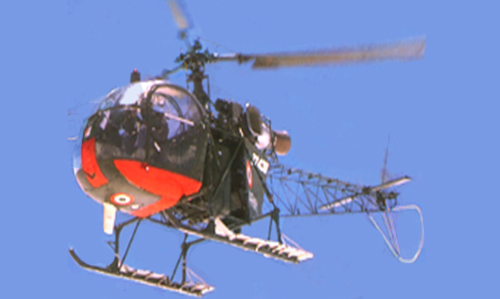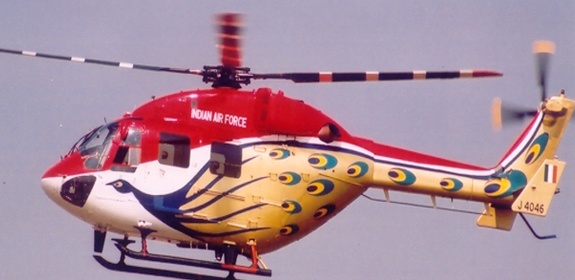International Relations
Indo – US 2+2 Dialogue
Why in News
India and the US have recently concluded second 2+2 ministerial dialogue in Washington. Several landmark agreements in both defence and Civilian sectors were signed.
Key Points
- Industrial Security Annex (ISA)
- ISA to the General Security Of Military Information Agreement (GSOMIA) will provide a framework for exchange and protection of classified military information between the U.S. and Indian defence industries.
- Currently, under GSOMIA, such information is exchanged between the Government authorities of the two countries but not between private parties.
- This will further promote “Make in India” in the defence sector.
- In accordance with the budget announcement (2018-19), the government has already decided to set up two Defence Industrial Corridors in the country, one in Uttar Pradesh and another in Tamil Nadu.
- Peacekeeping for Indo-Pacific
- Cooperation in capacity-building of UN peacekeepers from Indo-Pacific countries, based on demands from the countries concerned.
- Counter-terrorism efforts were also discussed including dangers of of cross border terrorism.
- Tiger Triumph Exercise
- To hold the India-U.S. joint tri-services ‘Tiger Triumph’ on an annual basis.
- The first edition was held in November 2019 as a Humanitarian Assistance and Disaster Relief (HADR) exercise.
- Coalition for Disaster Resilient Infrastructure (CDRI)
- The CDRI was launched at the UN Climate Action Summit in New York, USA in September 2019. It is headquartered in New Delhi, India.
- The US is now part of it.
- Water Resource Management
- Memorandum of understanding (MoU) was signed between Ministry of Jal Shakti and the U.S. Geological Survey to promote technical cooperation in water resources management and water technology.
- Space Situational Awareness (SSA)
- Cooperation for exchange of information including space debris and space traffic management.
- It ensures navigational safety of our space assets.
- Young Innovators Internship Programme (YIIP)
- Create internship opportunities in key areas of science and economy.
- New opportunities for young entrepreneurs.
- Parliamentary Exchange and Judicial cooperation
- Reciprocal visits by Parliamentarians from both countries.
- The U.S. Federal Judicial Center and India’s National Judicial Academy in Bhopal to cooperate in the area of counter-terrorism jurisprudence to new areas of criminal jurisprudence including money laundering, drug trafficking etc.
‘2+2’ Dialogue
- It is a format of dialogue where the defense and foreign ministers or secretaries meet with their counterparts from another country. 2+2 Ministerial is the highest-level institutional mechanism between the two countries.
- India holds such talks with Australia, at the foreign secretary and defense secretary level but with Japan and the US at the ministerial level.
- With the US this was the second 2+2 meeting (Washington), first was held in New Delhi in September 2018.
- US holds such ministerial dialogues with Australia and Japan also.
Governance
National Population Register Updation
Why in News
The Union Home Ministry will be undertaking an updation exercise of the National Population Register (NPR).
- The National Population Register (NPR) updation exercise will be undertaken alongside Census 2021. But no biometric data will be collected during the updation exercise
- It will be conducted by the Office of the Registrar General of India (RGI) under the Home Ministry.
National Population Register
- Definition:
- According to the Citizenship Rules (2003), an NPR is ‘the register containing details of persons usually residing in a village or rural area or town or ward or demarcated area (demarcated by the Registrar General of Citizen Registration).
- According to Census of India, a “usual resident of the country” is one who has been residing in a local area for at least the last six months, or intends to stay in a particular location for the next six months.
- According to the Citizenship Rules (2003), an NPR is ‘the register containing details of persons usually residing in a village or rural area or town or ward or demarcated area (demarcated by the Registrar General of Citizen Registration).
- Legal Provisions:
- It is notified under the Citizenship (Registration of Citizens and Issue of National Identity Cards) Rules, 2003.
- It is mandatory for every “usual resident of India” to register in the NPR.
- Current Scenario:
- The data for the NPR was first collected in 2010 along with the house listing phase of Census 2011.
- For Census 2021, data will be collected on 21 points for updating the NPR.
- The updation of NPR will newly include date and place of birth of parents in addition to the last place of residence, Permanent Account Number, Aadhaar (on a voluntary basis), Voter ID card number, Driving License number and mobile number.
- For NPR (2010), data was collected on 15 points. These 15 points did not include date and place of birth of parents, last place of residence, passport number, Aadhaar ID, PAN, Driving Licence number, Voter ID card and Mobile number.
International Relations
Afghanistan First Country to Recognise Indian Pharmacopoeia
Why in News
The Islamic Republic of Afghanistan has formally recognised the Indian Pharmacopoeia (IP).
- It is a reputable book of standards for drugs. Now it will be used in Afghanistan to ensure quality of health products.
Indian Pharmacopoeia
- It is an officially recognized book of standards as per the Drugs and Cosmetics Act, 1940 and Rules 1945 thereunder.
- As per the Second Schedule of the Drugs and Cosmetics Act, IP is designated as the official book of standards for drugs imported and/or manufactured for sale, stock or exhibition for sale or distribution in India.
- It specifies the standards of drugs manufactured and marketed in India in terms of their identity, purity and strength.
- Standards prescribed in the IP are authoritative in nature and are enforced by the regulatory authorities for quality control of medicines in India.
- It is being published as an official document for improving quality of medicines by way of adding new and updating existing monographs by the Indian Pharmacopoeia Commission.
Indian Pharmacopoeia Commission
- It is an autonomous institution under the Ministry of Health and Family Welfare which is responsible to set standards of drugs in the country.
- It promotes public and animal health in India by bringing out authoritative and officially accepted standards for quality of drugs including active pharmaceutical ingredients, excipients and dosage forms, used by health professionals, patients and consumers.
- It also develops IP Reference Substances (IPRS) that act as fingerprints for identification of an article under test and its purity as prescribed in the IP monographs.
The Drugs and Cosmetics Act, 1940
- It is an act of Parliament which regulates the import, manufacturing and distribution of drugs in India.
- Its objective is to ensure that the drugs and cosmetics sold in India are safe, effective and fulfils the safety standards and parameters.
Biodiversity & Environment
EU Green Deal
Why in News
In the background of the failure of the global community to reach any agreement in the recently concluded COP 25, the European Union (EU) has come up with a climate action plan known as the European Green Deal.
- The European Union is the third-largest emitter of greenhouse gases in the world after China and the United States.
Major Decisions under Green Deal
- Achieving Climate Neutrality
- To become “climate neutral” by 2050 and to achieve this, a law will be brought which will be binding on all member countries. A law will turn the political commitment into a legal obligation and will trigger the investments as well.
- The EU is now the first major emitter to agree to the 2050 climate neutrality target laid down in the Paris Agreement.
- Climate neutrality is achieved when a country’s emissions are balanced by absorptions and removal of greenhouse gases from the atmosphere. It is also expressed as a state of net-zero emissions.
- Absorption can be increased by creating more carbon sinks like forests, while removal involves technologies like carbon capture and storage.
Note: Bhutan and Suriname are the only carbon neutral countries in the world.
- Increasing 2030 Emission Reduction Targets
- Increase the reduction in its emissions to at least 50% and work towards 55% in the near future.
- Earlier, the EU had committed to reduce its emissions by 40% by 2030 from 1990 levels under the Paris Agreement. This was already the most ambitious emission reduction targets among developed countries.
- For example, USA had agreed to cut emissions by 26-28% by 2030 from 2005 levels but after withdrawing from the Paris Agreement, it is under no obligations now.
- The EU is one of the major emitters to retain the 1990 baseline for emission cuts which were originally mandated under the Kyoto Protocol for all developed countries. Most other countries have shifted their baselines to 2005 or even later under the 2015 Paris Agreement.
- Increase the reduction in its emissions to at least 50% and work towards 55% in the near future.
- Sectoral Plans: It includes sectoral plans to achieve these targets which include making the steel industry carbon-free by 2030, new strategies for transport and energy sectors, a revision of management of railway and shipping to make them more efficient and more stringent air pollution emission standards for vehicles.
Achievements
- The EU has been doing better than other developed countries on reducing emissions.
- In terms of emission reductions, it probably is on track to meet the target of 20% by 2020, unlike any developed country outside the EU.
- Canada reported a 4% reduction from 2005 levels. Japan reported an 8% reduction from the 2013 baseline.
Concerns
- The EU has not been fulfilling all its climate obligations because Kyoto Protocol requires rich and developed countries to provide finance and technology to developing countries to help them fight climate change. EU is helping very less, especially for adaptation needs of developing countries.
- This is the main reason why developing countries like India and China, have been repeatedly raising the issue of unfulfilled obligations of developed countries.
- The Green Deal is inadequate for achieving the emission reductions because big emitters and large developing countries like China and India are not immediately scaling up their climate actions. Withdrawal of the USA has also negatively impacted the step towards climate change mitigation.
Way Forward
- Other countries need to raise their ambitions and the reduction targets and their policies should be in line with the global environmental agreements.
- EU should be more helpful towards developing nations so that its efforts do not get wasted and every nation is equally contributing towards conservation of the planet.
Important Facts For Prelims
EChO Network
Why in News
EChO Network is a collaborative effort of the Government of India, industry and academia.
Key Points
- EChO Network is a national program to provide a template for cross-disciplinary leadership related to ecology and environment.
- EChO Network would develop a national network to catalyse a new generation of Indians who can synthesize interdisciplinary concepts and tackle real-world problems in medicine, agriculture, ecology, and technology.
- It has a specific focus on increasing research, knowledge, and awareness of Indian ecology and the environment.
- The network aims to identify gaps in knowledge regarding the environment and then train postdoctoral leaders in research and outreach on these topics, incorporating current public and private efforts.
Important Facts For Prelims
CST-100 Starliner
Why in News
CST-100 Starliner is a space capsule of National Aeronautics and Space Administration (NASA) which failed its first test flight. Its objective was to ferry astronauts to the International Space Station (ISS).
Key Points
- The capsule CST-100 Starliner was built by Boieng.
- National Aeronautics and Space Administration (NASA) relies on Russia to get its astronauts on the space station.This failure is likely to push back further NASA’s attempt at resuming human spaceflight from the United States.
- NASA has contracts with Boeing and SpaceX to build spacecraft to ferry astronauts to and from the ISS.
- SpaceX’s Crew Dragon capsule is scheduled to launch in 2020. It will be a crewless flight, and if it succeeds, SpaceX could be in a position to send astronauts into space.
International Space Station
- The International Space Station (ISS) is a habitable artificial satellite - the single largest man-made structure in low earth orbit.
- It circles the Earth in roughly 92 minutes and completes 15.5 orbits per day.
- The ISS programme is a joint project between five participating space agencies: NASA (United States), Roscosmos (Russia), JAXA (Japan), ESA (Europe), and CSA (Canada) but its ownership and use has been established by intergovernmental treaties and agreements.
- Its first component was launched into orbit in 1998 and its development and assembly still continues.
- It serves as a microgravity and space environment research laboratory in which crew members conduct experiments in biology, human biology, physics, astronomy, meteorology, and other fields.
- Continuous presence at ISS has resulted into the longest continuous human presence in the low earth orbit.
- It is expected to operate until 2030.
Important Facts For Prelims
Society of Biotechnology of India
Why in News
Recently, the Society of Biotechnology of India (SBPI) was launched by former biotechnologists and technocrats of the Union Department of Biotechnology, Ministry of Science and Technology.
Key Points
- It is a non-profit organisation.
- It would promote transformation changes and approaches towards core research in modern biotechnology so that the outcome could lead to more products and technologies for economic and social gain.
- It would complement India's efforts towards enhancing research funding of “gap areas” in infrastructure, human resources, regulatory frameworks and converting research and development leads into applications.
- Members of the SBPI have experience in promoting biotechnology in areas such as BT cotton, introduction of recombinant therapeutic proteins and vaccines and fostering international collaborations.
Recombinant Therapeutic Proteins
- These are produced from recombinant DNA using biomolecular engineering, which involves inserting the gene encoding of a protein into expression systems such as bacteria, yeast or mammalian cells cultures.
- Recombinant therapeutic proteins have gained importance for clinical applications and they have replaced the original animal-derived version used in medicine.
- Therapeutic proteins are quite diverse in the application treatments such as human insulin for diabetes, erythropoietin for anemia and chronic renal failure, vaccines for Hepatitis B etc.
Important Facts For Prelims
Apache Helicopters for Indian Army
Why in News
The deal for six AH-64E Apache attack helicopters for the Indian Army is to be signed.
- Currently, the Army Aviation Corps operates only smaller Cheetah and ALH (Advanced Light Helicopters) that weigh less than five tonnes.
- These are in addition to 22 Apaches being inducted by the Indian Air Force (IAF) which will replace the Russian Mi-35 attack helicopters in service.
AH-64E Apache Attack Helicopter
- Better known as an attack helicopter are received from the Boeing production facility in Mesa, Arizona, USA.
- These are all-weather capable, easily maintainable and have high agility and survivability against battle damage.
- The capabilities of the AH-64E Apache Attack Helicopter includes:
- It can carry out precision attacks at standoff ranges and operate in hostile airspace with threats from the ground.
- It can transmit and receive battlefield picture through data uplinking and networking.
- It can also shoot fire and forget anti-tank guided missiles, air to air missiles, rockets while providing versatility to helicopter in network-centric aerial warfare.
- It also carries fire control radar, which has a 360° coverage and nose-mounted sensor suite for target acquisition and night vision systems.
- The addition of the Apache Attack Helicopter is a significant step towards modernisation of Indian Air Force helicopter fleet and the Indian Army.
Cheetah Helicopters
- The Cheetah Helicopter is a high-performance helicopter designed by Hindustan Aeronautics Limited (HAL).
- It is identical to LAMA SA 315B Helicopter of Eurocopter, France.
- It is a five-seater multi-role, multi-purpose, highly manoeuvrable helicopter.
- It holds the world record in high altitude flying among all categories of Helicopters.
- The helicopter is suitable for commuting, observation, surveillance, logistics support, rescue operations and high altitude missions.
Advanced Light Helicopter (ALH-DHRUV)
- The indigenously designed and developed Advanced Light Helicopter (ALH-DHRUV) is a twin-engine, multi-role, multi-mission new generation helicopter in the 5.5-ton weight class.
- The major variants of Dhruv are classified as Dhruv Mk-I, Mk-II, Mk-III & Mk-IV.




